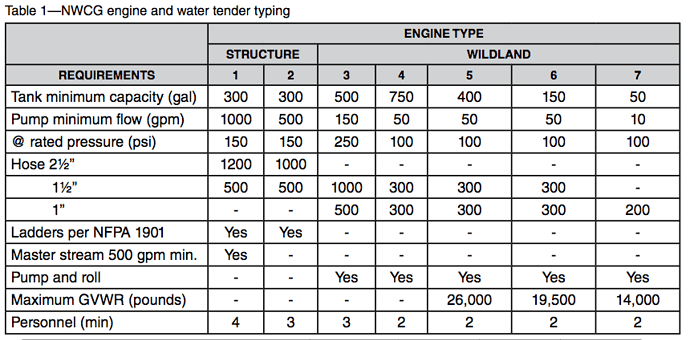Hubs is on a patrol strike team. First time ever on this kind of ST. As I understand it the patrol trucks get bounced around more and also get held on to fires and become more like hand crews during that time. Again new to me.
yep, Same thing. been a bit for me. Think that’s a type 4 strike team. Tell you hubby to keep safe. This is one of “Those” years. I remember them well in my 31 years of service.
Probably a Type 6 Strike team. Very sought after by FS for Fireing operations.
that’s what I meant. LOL! thanks Arep2:sunglasses:
Was / used to be a T-4 in Ca system, but didn’t align with Feds and NWCG for Eng typing
I worked a type 6 several years in central Oregon, and we put out a lot of fire, laid down a lot of fire, and went completely cross country with those things whenever possible, beats laying hose and walking.
CALFIRE is using type 6’s as perimeter control. More CA agencies are buying T6’s as they see them as a way to get hired for fires. San Diego County fire has a ST of 6’s assigned to the Ferguson fire now.
yeah I remember that was the model 2000 class engines. I think there was only 2 made and sent around the state to different units to get a proper shake down. Never knew what became of it. Just stopped hearing about it.
The Type 6’s generally have a better turning radius, lower profile, & lighter than the ever-growing Model 34’s. Yeah, they don’t hold as much stuff, but created for wildland rather than all-purpose. You’ll see more & more LG agencies purchasing them as they are more resourceful & cheaper; way better for constraining budgets. I’m sure you’ve heard, but Cal OES is building a bunch. I’m still a HUGE Model 14/15 fan (which I really miss that style), but I believe the Type 6 buildis a good alternative.
I count 43 type 6 orders that have been filled on the ferguson, many of those are patrol rigs.
This table showing engine types is from a 2013 NWCG publication. I think it is probably still accurate.
Type 1 = alpha (STA)
Type 2 = bravo (STB)
Type 3 = charlie (STC)
Type 4 = delta (STD)
Type 5 = echo (STE)
Type 6 = foxtrot (STF)
Type 7 = foxtrot foxtrot (STFF???)
The only correction to that table, at least for California LG folks, is on the minimum personnel for a type 6. the Cal OES rigs that will be held by LG agencies will be required to staff with 3 personnel. I think that is a bad direction, but that discussion is better had over refreshments. 
My Department has been using Type 6’s for years. In the past, we had only been deployed as a Gel Task Force in the Southern Region.
This year, something has changed… I was deployed to the County Incident (LNU) on a Type 6 ST. We were one of 4 Foxtrot STs on the incident. We were used for perimeter control and mop up. A few of the shifts, we were teamed up with hand crews and did some hot spotting.
Currently, our patrols are deployed on the Carr Incident.
Guess this is the “new” fire service.
Be careful out there.
CAL Fire Model 5 were the best wild land engine
Years ago, Kern used to send out patrol strike teams all the time, all 47 stations have one. The type 3’s got more popular for strike teams and the patrols were set to the side. Seams like the last couple years people have been starting to use them more again. They are a great tool for the right application.
Sounds like your husband is on the 79F strike team, they chose to extend instead of rotate at day 14, so will have to demob or rotate crews after 21 days. It’s a LG strike team, even though they are staffed by cal fire employees.
Any word on the Lions Fire? I have a place in Mammoth & I am in France now. So worried.
True true. Nothing like following a dozer as they cut direct lines. Nothing like the sight of the universe at 2am while your traveling across the state.
We use type 5/6 engines heavily here in the south east USA, and across the rest of the country for that matter, wonderful resource if trained and utilized properly… almost never see type 3/4 engines here hard to justify if you have type ones and a bunch of 5/6’s… bunch of these and a bunch of prescribed fire could do some good to the west IMO. Wish I was deployed on a strike team of 6’s
Type 6s are like every other tool. They have their place. I’ve worked in 4s and 6s, both have advantages. The water behind a 4 is great, the agility of a six can’t be beat in tight quarters, small bridges, dozer lines, etc. Both great tools when used appropriately.
Model 5’s (ICS Type 3) were beasts as far as where they would go. They are also the least comfortable engine for long trips up and down the coast in the middle of the night. And they don’t provide much room for ‘vehicle as refuge’ during an entrapment/burnover situation.
Still, I think they were the most capable of the engines I have experience: 1, 5, 9, 10, 11, 14, 15. I don’t know about the newer models.
